#Latest Web Development Trends 2023
Explore tagged Tumblr posts
Text
Best Full Stack Web Developer Roadmap 2023 - Iqontech
At the heart of the Full Stack Web Developer Roadmap 2023 lies a solid foundation in programming languages such as HTML, CSS, and JavaScript. These form the building blocks of the web and allow you to create visually appealing and interactive user interfaces.
#Full Stack Web Developer Roadmap 2023#Full Stack Web Development Guide 2023#Web Development Roadmap for 2023#Full Stack Developer Skills roadmap 2023#Frontend and Backend Development 2023#Best Technologies for Full Stack Web Developers 2023#Full Stack Web Development Learning Path 2023#Latest Web Development Trends 2023#Full Stack Web Development Tools 2023#How to Become a Full Stack Web Developer in 2023
0 notes
Text
The Evolution of Web Development: Trends and Techniques for 2023

Introduction:
As we step into the dynamic realm of 2023, the landscape of web development is evolving at an unprecedented pace. In this era of technological advancement, staying abreast of the latest trends and techniques is paramount for web developers and businesses alike. In this blog post, we delve into the key web development trends of 2023 and explore the cutting-edge technologies shaping the digital landscape.
1. Progressive Web Applications (PWAs):
One of the foremost trends dominating web development in 2023 is the rise of Progressive Web Applications (PWAs). These applications combine the best of both web and mobile applications, offering users a seamless and responsive experience. PWAs leverage the latest web technologies, providing faster load times and enhanced performance. As businesses strive to enhance user engagement, the adoption of PWAs is becoming increasingly prevalent.
2. AI and Machine Learning Integration:
Web development in 2023 is witnessing a significant integration of artificial intelligence (AI) and machine learning (ML). From chatbots that enhance user interaction to personalized content recommendations, AI is revolutionizing the way websites and applications engage with their users. The implementation of these technologies not only improves user experience but also enables businesses to make data-driven decisions.
3. Voice Search Optimization:
As voice-activated devices continue to gain popularity, optimizing websites for voice search has become a crucial aspect of web development in 2023. Incorporating natural language processing and understanding, developers are crafting websites that cater to the growing number of users relying on voice commands. This trend underscores the importance of adapting to changing user behaviors and preferences.
4. Web Assembly (Wasm):
Web Assembly is revolutionizing the performance of web applications by enabling them to run at near-native speed. This binary instruction format allows developers to write code in languages like C++ and Rust, expanding the possibilities of what can be achieved in the browser. As WebAssembly gains traction, it is expected to become a staple in web development, empowering developers to create highly efficient and powerful web applications.
5. Blockchain Integration:
Blockchain technology is not limited to cryptocurrencies; it is finding its way into web development, providing enhanced security and transparency. From decentralized applications (dApps) to secure online transactions, integrating blockchain is a trend that is set to grow in 2023. As concerns about data security rise, the use of blockchain in web development offers a robust solution to address these challenges.
Conclusion:
In the fast-paced world of web development, staying ahead of the curve is essential for success. The trends and techniques highlighted in this blog provide a glimpse into the exciting advancements shaping the digital landscape in 2023. From the widespread adoption of Progressive Web Applications to the integration of cutting-edge technologies like AI and blockchain, web developers have an array of tools at their disposal to create innovative and user-centric experiences. As we navigate the evolving web development landscape, embracing these trends will undoubtedly pave the way for the future of digital innovation. Keep abreast of the latest web development trends in 2023, leverage the power of the latest web technologies, and embark on a journey of unparalleled digital transformation. The evolution of web development is not just a progression; it's a revolution.
#latest web technologies#web development trends in 2023#attitude academy#enrollnow#learnwithattitudeacademy#bestcourse#attitude tally academy#website development course#website development bd
0 notes
Text
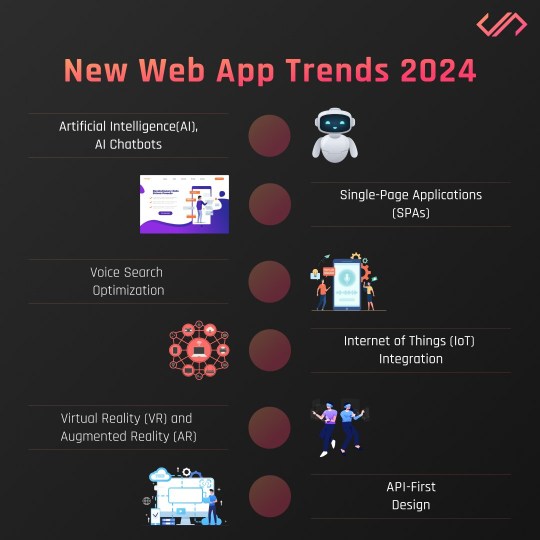
Discover the Latest Web App Trends for 2024
Explore the top web app trends set to revolutionize 2024. Stay ahead of the curve with the latest innovations in technology, design, and user experience.
To know more click on the below link.
#jhavtechstudios#mobileapps#mobile apps#technology#app development#app developers#web developer#jhavtech studios#website designing#webdesign#software development#ai#artificial intelligence#viral trends
3 notes
·
View notes
Text
This day in history

On June 20, I'm keynoting the LOCUS AWARDS in OAKLAND.

#20yrsago Ian McDonald’s brilliant new novel, River of Gods: Bollywoodpunk https://memex.craphound.com/2004/06/12/ian-mcdonalds-brilliant-new-novel-river-of-gods-bollywoodpunk/
#15yrsago British cops deliver Catch 22 to photographers: you’re not allowed to know which areas you’re not allowed to photograph https://web.archive.org/web/20090616063717/http://www.bjp-online.com/public/showPage.html?page=861650
#10yrsago Duration of WWII vs duration of movies about WWII https://what-if.xkcd.com/100/
#10yrsago George Orwell’s National Union of Journalists card https://vintageanchorbooks.tumblr.com/post/88379861562
#10yrsago Thai shrimp industry runs on brutal slavery and murder https://www.theguardian.com/global-development/2014/jun/10/supermarket-prawns-thailand-produced-slave-labour
#5yrsago It Feels Good to Be Yourself: a sweet, simple picture book about gender identity https://memex.craphound.com/2019/06/12/it-feels-good-to-be-yourself-a-sweet-simple-picture-book-about-gender-identity/
#5yrsago The latest popular uprising in Hong Kong is fighting to keep Beijing from dragging dissidents to mainland China https://www.aljazeera.com/news/2019/6/12/hong-kong-extradition-bill-debate-delayed-after-massive-protests
#5yrsago When you take a commercial genetic test, you opt your whole family into warrantless state genetic surveillance https://www.nytimes.com/2019/06/11/opinion/police-dna-warrant.html
#5yrsago Mary Meeker’s 2019 Internet Trends: stalled growth, security dumpster-fires, more online education and fear of regulation https://www.youtube.com/watch?v=G_dwZB5h56E
#5yrsago A deep dive into stalkerware’s creepy marketing, illegal privacy invasions, and terrible security https://citizenlab.ca/2019/06/the-predator-in-your-pocket-a-multidisciplinary-assessment-of-the-stalkerware-application-industry/
#5yrsago Amazon unveils a new Echo Dot surveillance device for children https://www.pcmag.com/news/all-new-echo-dot-kids-edition-launches-june-26
#5yrsago Twitter’s anti-Nazi policies result bans on pictures of anti-Nazi books https://www.thedailybeast.com/journalist-david-neiwert-twitter-suspended-me-for-displaying-book-about-far-right
#5yrsago In homeless LA, the families, retirees and working people who live in their cars are desperate for overnight parking https://www.latimes.com/local/lanow/la-me-homeless-safe-parking-los-angeles-20190610-story.html
#1yrago Podcasting "Ideas Lying Around" https://pluralistic.net/2023/06/12/only-a-crisis/#lets-gooooo
3 notes
·
View notes
Text
Blogging in a TLDR World
or "Is blogging still relevant in the age of TikToks and Instagram?"

In the history of the internet, blogging has its special place in the web of content available to browse that is functionally endless. Though blogging as a phenomenon seems to have tapered off in terms of readership, Walker-Ford (2017) found that 77% of internet users today report to still read blogs often. W3Techs (2023) found that WordPress, which is a core component in most blogging sites, still powers almost half of all the internet. These general stats show that blogging, though not as ubiquitous of a trend in the modern psyche, has left a massive mark on content creation. Now the question arises about the nature of blogging as its own distinctive brand of content creation.

But first, let us set up some parameters for our discussion. What exactly is a blog? As defined by Harcup (2014), the term "blog" itself is an abbreviation for "web log", an online journal that usually displays posts chronologically and allows readers to leave comments. Blogging, therefore, is the writing and posting of these blog entries.
Now, let me first clarify the title above, "Blogging in a TLDR World". With the rise and rise of video sharing social networking services like TikTok and Instagram, information relayed using Instagram's reels feature or TikTok's format of brief videos that last less than one minute create an expectation from users that content is compressed and simplified into a somewhat commoditised version of general knowledge sharing. The briefness of each post leaves no room for lengthy academic discussion and forces creators to sum up an entire story into a short time span. In modern internet language, this phenomenon of summing things up rather than giving a lengthy explanation is "TLDR", an abbreviation meaning "Too long didn't read". It implies that the reader does not have time to read a full text and prefers a shortened version. I see this as symptomatic of the modern lifestyle so ubiquitous today that we're just too bloody busy with work or study that we're unable to take more than 10 minutes out of their daily schedule to read a relatively lengthy article.

From a certain perspective, one can see somewhat of an interesting correlation between today's TLDR culture of wanting quick and readily available information dumped on you makes the case for social constructivism. Briefly, social constructivism as defined by Blackburn (2016) is that technology and how it develops is a result of societal circumstances where problems require solutions at the time. How this connect back to the rise of TikTok and Instagram and the relevance of blogging is to connect the ubiquitous fast-paced modern life with the simple short video format synonymous with these social media sites. Though you can disagree with me on that observation, I believe it is crucial to look at it objectively and consider that correlation and its causation.

Now, what are my thoughts on blogging's place in a world where TikTok and Instagram seem to reign supreme? As stated earlier, the latest statistics show that blogging, though out of the limelight, is still a considerable chunk of the internet and the engineering that blogging required to function has left a massive impact on countless websites and their formats. There are still countless blogs floating around the internet, as Chakarov (2023) reports that there are around 600 million blogs, taking up more than a third of all websites ever published. And on a personal note, I myself am quite fond of the format of classic blogging as it through blogging that many people had their first exposure to the internet as a whole and it has influenced other important internet cultural icons like Youtube. There is a sense of nostalgia looking through blogs posts from the not-so distant past of the internet and I feel as if we should cherish it.
From the statistics, blogging is still very much alive, whether we like it or not. So to answer the question "is blogging still relevant in the age of TikToks and Instagram?", it would be a confident "yes" from me.

References
Blackburn, S 2016, A Dictionary of Philosophy, Oxford University Press, Oxford
Chin, B 2023, 'Week 2: Orality, Writing and the Influence of the Printing Press', MDA10006 Innovation Culture: Perspectives on the Science and Technology, Learning materials via Canvas, Swinburne University of Technology, 11 September, viewed 29 September 2023.
Harcup, T 2014, A Dictionary of Journalism, Oxford University Press, Oxford
7 notes
·
View notes
Text
How to Make a Marketplace Website in 2022

Online marketplaces are great places to find deals and offers and compare products without visiting physical stores. That’s why you might want to create a marketplace website in 2022. But you need to work with a web development agency that has a team of qualified and experienced professionals. Do you know how to create a marketplace website that has all the necessary features? Do you know how to apply the latest designs to your website? Keep reading to find out!
How to Make a Marketplace Website in 2022?
1. Know Your Marketplace Type: The first thing that you need to know is what type of marketplace you want to focus upon. Do you want to sell medicine, grocery items, meat, apparel, home improvement, jewellery or all of them together? At this stage, you can do market research on the potential of multiple products and finally choose a niche for your website.
2. Organize Your Company Data: Secondly, you need to organize your business data so that you can start the project with all compliance. It will also help you to keep your online business safe and secure. Your partner software development agency may also ask for some relevant data before starting the project. Hence, you need to be ready with your company data at the earliest.
3. Select a Revenue Structure: Next, you need to select a revenue structure or model so that you can be ready with financial support before the project starts. You can choose among different types of revenue models depending upon your business niche, your products, services, needs and preferences. It will help you to run your website without any hassle in the long run.
4. Choose the Best Features: Here comes the most important part of creating a marketplace website. Creating a feature-rich and scalable website is the first step to increasing customers of your marketplace website. Hence, you can discuss with your partner web development agency which web designing features and currently trending and what will be the best for you.
Why Choosing a Marketplace Website in 2022?
1. Apart from the growth of online buyers, there are multiple other reasons why creating a marketplace website is the best choice for business owners. Here are some benefits of an online marketplace that you can consider before starting
2. The online marketplace lets you accelerate business growth as well as income with minimal effort. There will be a team of developers who can make your website ready for work.
3. You can start a convenient way for the customers to shop online with your online marketplace. As they can shop from the comfort of their home, they will rely more on you.
4. The online marketplace allows you to provide multiple types of payment options to your customers. Today, online payment is the best method for most customers.
5. You will be able to create a huge community of online buyers and hence, can provide them with special offers or discounts on the products they buy frequently.
Now that you have the multifarious ways of making a marketplace website in 2023, just go ahead. If you are looking for a Minnesota web design company for your marketplace website, look no further than us. We, Idiosys USA, are one of the most eminent web development consulting agencies in Minnesota, United States, providing a plethora of IT services, including e-commerce and marketplace website development and digital marketing for the e-commerce industry. In very recent years, our digital marketing team helped a US e-commerce organization boost their sales by up to 55% by decreasing the campaign cost by 13%. Our team also has a proven track record of successful marketing strategy implementation in the e-commerce industry.
#web development agency#software development agency#minnesota web design#web development consulting#website development company in usa#hire web developer#hire web designer#web developer minneapolis#minneapolis web development#website design company#web development minneapolis#minnesota web developers#web design company minneapolis
2 notes
·
View notes
Text
6 Cutting-Edge Web Development Trends in London for 2023
Innovative websites balance creativity, performance and future-proofing across digital experiences. The latest web development requires ongoing learning due to fast technology changes. What are the popular frameworks, techniques, and interactions are people discussing for the upcoming year? Top UX Design Company London and coders are sharing the latest web trends that influence their strategic consulting for 2023 engagements.
1. Progressive Web Apps (PWAs)
Web Design Services London says Progressive Web Apps are a game-changer. They bring together web and mobile apps' high performance and user engagement. Like traditional web pages, PWAs load quickly, offering functionality like offline accessibility and push notifications. Businesses in London that choose PWA technology will enjoy better user experiences, higher conversion rates, and lower development costs.

2. AI and Machine Learning Integration
More and more web design services London UK include artificial intelligence and machine learning in web development. They analyze users 'behavior and preferences and provide customized experiences for users. Whether through chatbots that provide immediate customer service, or through AI-assisted personalization of content and gifts, AI and machine learning are changing how companies do business online with their customers.
3. Voice Search Optimization
With voice-activated devices becoming ubiquitous, focusing on voice search is becoming essential. Digital Marketing Services in London believes that web content must be adapted to voice queries, which are more conversational and longer than typed searches. This trend is geared towards making your website's information easy to find through voice search, improving navigability and user experience.
4. Motion UI Design
Motion UI is a rising trend among the London UI design Company experts. Animations and dynamic graphics are used to liven up web pages and make them interactive. This year, you will see more sites using inconspicuous animations, hover effects, and background animations to direct user focus and to enhance storytelling on pages.
5. Cybersecurity Enhancements
Experts in IT Consultation service London are discussing the need for strong cybersecurity in web development due to the growing threats in the digital world. It means using modern security protocols, doing regular security audits, and following data protection rules. Companies must protect their data and build trust with customers.

6. Sustainable Web Design
Sustainability in web design is an emerging trend. Therefore, Web Design London firms have focused on developing environmentally friendly and energy-efficient websites. This means optimizing images and videos for quicker load times, using eco-friendly hosting services, and designing for less data transfer. It's about designing sites not only pretty and functional, but friendly to Mother Earth.
Conclusion
London Web Development Services stays ahead of tech shifts. They do this to serve clients better. They experiment, test solutions, and adopt new technologies early. They also choose the right time to implement these changes. OTB Solutions is the Best UX Company In London and a digital transformation expert. They combine strategic vision with tactical implementations. Their goal is to convert ambitious ideas into engaging online experiences. These experiences are future-ready and prepared for what comes next.
2 notes
·
View notes
Text
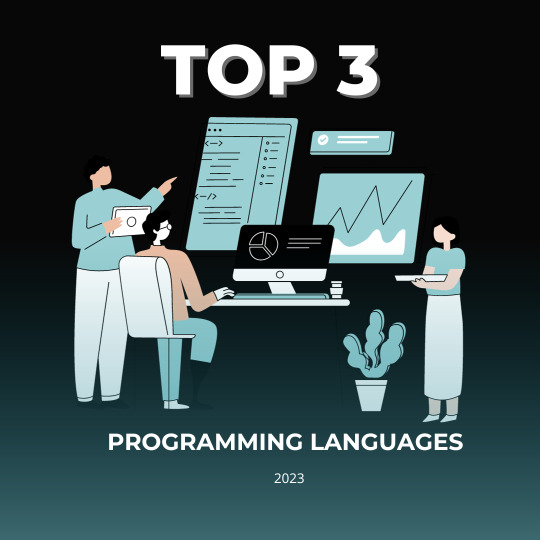
The popularity of programming languages can change over time due to various factors like technological advancements, industry trends, and community preferences.
However, as of my last update, some of the widely used programming languages included:
Python: Python has been consistently popular due to its versatility, ease of learning, and extensive libraries. It's commonly used in web development, data analysis, artificial intelligence, and scientific computing. JavaScript: JavaScript remains essential for web development, both on the front-end and back-end. With the rise of Node.js, it's also used for server-side development. It's likely to continue its importance in 2023. Java or C++: These languages have a long history and continue to be relevant, especially in areas like enterprise software, mobile app development (Java for Android), and game development (C++ in game engines like Unreal Engine). The popularity of languages can vary depending on your specific area of interest or industry, so it's essential to stay updated with the latest trends and developments in the programming world.
2 notes
·
View notes
Text
What Are The Latest Business Certifications In 2023?
Business certifications can help you advance your career and improve your skills in a variety of business areas by validating your skills in a specific domain. Certifications are necessary to address the current needs of the constantly increasing digital economy.
Let us go through a comprehensive list of the latest trending business certifications that can make you more marketable to employers.

Certified Supply Chain Professional (CSCP) Certification: You can verify your skills in supply chain management with this one of the credible certifications. It is a great way to show that you understand the different aspects of supply chain management and that you can apply those skills to improve the efficiency and effectiveness of your organization's supply chain.
Six Sigma Certification: Six Sigma certifications, such as Six Sigma Green Belt and Six Sigma Black Belt, validate one's ability to analyze and improve business processes to enhance efficiency and quality.
Certified Business Analysis Professional (CBAP) Certification: This certification targets professionals who want to validate their skills in business analysis. It verifies that the certified professionals have the core knowledge to define business requirements and translate those requirements into technical specifications.
Project Management Professional (PMP) Certification: It is one of the most well-known and respected project management certifications in the world. With this certification, you can boost your professional career by demonstrating your skills and knowledge in project management.
Certified Management Accountant (CMA) Certification: The CMA certification recognizes expertise in management accounting and financial management, making it relevant for professionals in financial planning, analysis, and control.
Google Cloud Certified - Professional Cloud Architect Certification: This certification is for professionals who want to demonstrate their skills in designing, building, and managing Google Cloud Platform (GCP) solutions. It is a great way to show that you are up-to-date on the latest GCP technologies and that you can use them to build scalable and secure cloud-based solutions.
Certified Information Systems Auditor (CISA) Certification: CISA is a globally recognized certification for information systems audit, control, and security professionals. It demonstrates competence in assessing and managing an organization's IT and business systems.
AWS Certified Solutions Architect - Associate Certification: This certification is for professionals who want to demonstrate their skills in designing, building, and deploying applications on Amazon Web Services (AWS). It is a great way to show that you are up-to-date on the latest AWS technologies and that you can use them to build scalable and secure cloud-based solutions.
Chartered Financial Analyst (CFA) Certification: The CFA designation is highly regarded in the finance and investment industry, signifying advanced skills in investment analysis, portfolio management, and ethical standards.
Certified ScrumMaster (CSM) Certification: CSM certification is designed for individuals who want to become Scrum Masters and facilitate agile project management and product development teams.
2 notes
·
View notes
Text
Security Testing: Why It's Crucial for Your Software's Success
In today's digital landscape, security is no longer a luxury—it's a necessity. Whether you're developing an enterprise application, mobile app, or web platform, security issues can have severe consequences for your business, reputation, and bottom line. This is where security testing comes in. For software products to thrive, they must be secure, functional, and reliable. That’s why working with a reputable software testing consultancy and Agile advisors is vital for ensuring your product’s robustness.
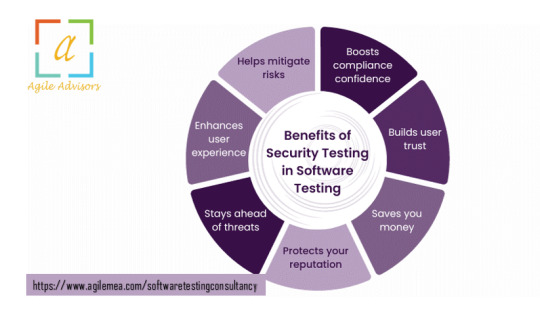
What Is Security Testing?
Security testing is the process of identifying vulnerabilities, threats, and risks in your software applications. The goal is to ensure that your application remains resistant to unauthorized access, data breaches, and other forms of cyber threats. It involves testing software for common security vulnerabilities, such as SQL injection, cross-site scripting (XSS), and others, while ensuring that sensitive data is properly encrypted and secured.
Why Security Testing Is Essential for Software Success
Protects User Data In the age of data privacy regulations like GDPR and CCPA, ensuring that your software protects user data is paramount. A breach can lead to severe financial penalties, lawsuits, and loss of consumer trust. Comprehensive security testing ensures that sensitive user data, such as passwords, payment information, and personal details, are properly protected.
Prevents Costly Breaches Security incidents, such as hacking, data theft, and fraud, can be disastrous for any organization. According to IBM’s Cost of a Data Breach Report, the average cost of a data breach in 2023 is over $4 million. Investing in security testing early can save you from incurring massive costs down the line, including fines, reputation damage, and lost revenue.
Improves Compliance Many industries are subject to strict regulations around data security and privacy, such as healthcare (HIPAA), finance (PCI DSS), and government contracts. Security testing helps ensure your software meets these compliance standards, reducing the risk of penalties or legal issues.
Boosts Customer Confidence Security is a major concern for customers, especially with increasing cyber threats. Knowing that your software has passed rigorous security testing increases customer confidence. By proactively addressing vulnerabilities, you show your users that you prioritize their safety and data privacy.
Enhances Software Quality Security testing isn’t just about identifying weaknesses—it's an integral part of your overall Quality Acceptance Testing (QAT). It ensures that your software works as intended under various conditions, including potential attacks. A bug-free, secure product is essential for both customer satisfaction and long-term success.
Why You Need a Software Testing Consultancy for Security Testing
While security testing can be performed in-house, partnering with a software testing consultancy brings significant advantages:
Expertise and Experience Security testing requires specialized knowledge and experience. A professional software testing consultancy brings a deep understanding of the latest security trends, vulnerabilities, and tools to ensure comprehensive testing. Their expertise helps identify issues that might be missed by developers or internal teams.
Scalability If your application is growing, so do the security risks. A consultancy can scale security testing efforts to meet your needs, whether you’re launching new features or scaling globally. They can perform penetration tests, vulnerability scans, and risk assessments at different stages of your software development life cycle.
Time and Cost Efficiency Outsourcing security testing to a consultancy saves you time and resources. You don’t have to invest in building an internal security testing team or developing complex testing protocols. Instead, you can leverage the consultancy’s tools, processes, and expertise to ensure a faster, more cost-effective security review.
Comprehensive Test Coverage A software testing consultancy offers a wide range of security testing services, including black-box testing, white-box testing, penetration testing, and more. This comprehensive coverage ensures that no potential vulnerability is overlooked.
Role of Agile Advisors in Enhancing Security Testing
Security testing should not be a one-time event, but rather an ongoing process integrated throughout your development cycle. This is where Agile advisors come into play. Agile methodologies emphasize continuous feedback and iteration, making them ideal for building secure, high-quality software.
Agile advisors can help streamline your security testing efforts by embedding security checks into each sprint and development phase. They ensure that:
Security is incorporated from day one: By involving security experts early in the development process, Agile advisors can ensure security concerns are addressed in every phase of the project. This reduces the likelihood of security issues arising later in the cycle.
Frequent testing is built into the process: Agile’s emphasis on continuous testing and integration makes it easier to catch security flaws early. By running security tests as part of your Quality Acceptance Testing (QAT) process, potential vulnerabilities can be identified and addressed swiftly.
Fast feedback loops: Agile advisors help create a feedback loop that enables the team to continuously improve the security posture of the software throughout the development lifecycle. This iterative approach ensures that security is always a top priority.
Key Types of Security Tests Performed by Consultancies
Penetration Testing Penetration testing involves simulating attacks on your application to identify vulnerabilities that hackers could exploit. It’s one of the most crucial aspects of security testing.
Vulnerability Scanning This automated process scans your software to identify known security holes, weak spots, and misconfigurations. It’s a quick and efficient way to uncover issues that could pose a risk.
Security Audits Security audits involve a detailed review of your software’s architecture, codebase, and infrastructure. A professional consultancy conducts audits to ensure your software adheres to industry best practices for security.
Compliance Testing If you operate in a regulated industry, compliance testing ensures your software meets required security standards. This type of testing can be crucial for maintaining certifications and avoiding penalties.
Conclusion
Security testing isn’t just a "nice to have"—it’s a core component of any successful software development process. By partnering with a software testing consultancy and collaborating with Agile advisors, you can ensure that your product is free from vulnerabilities and secure against potential threats. As part of your Quality Acceptance Testing (QAT) process, security testing will help you deliver a product that users trust and rely on.
Don’t wait until it’s too late. Protect your users, your reputation, and your bottom line by investing in comprehensive security testing today!
0 notes
Text
ChatGPT vs. Google Bard – A Comparative Guide to AI Chatbots

The rapid evolution of Artificial Intelligence has brought powerful conversational tools into our daily lives. At the forefront of this revolution stand two prominent names: OpenAI's ChatGPT and Google's Bard (now powered by Gemini). Both have captivated users globally with their ability to understand and generate human-like text, but they approach the world with different strengths, integrations, and philosophies.
For anyone looking to harness the power of AI for creative tasks, research, coding, or simply a knowledgeable companion, understanding the nuances between ChatGPT and Google Bard is crucial. Let's break down their key differences to help you choose the best AI chatbot for your needs in 2025.
The Core: Underlying Models and Data Access
The fundamental distinction lies in the AI models that power them and how they access information:
ChatGPT:
Underlying Models: Primarily built on OpenAI's GPT (Generative Pre-trained Transformer) family, with the latest paid versions leveraging advanced models like GPT-4o. The free version typically uses GPT-3.5 Turbo.
Data Access: Traditionally, ChatGPT's knowledge was limited by its training data cut-off (e.g., April 2023 for GPT-4). However, paid versions (ChatGPT Plus, Pro, Enterprise) now integrate web Browse capabilities (often via Bing search) to access real-time information, though this might require explicit activation for each query.
Training: Trained on a diverse dataset including books, Wikipedia, web pages, and licensed data, focusing on broad language understanding and generation.
Google Bard (powered by Gemini):
Underlying Models: Powered by Google's proprietary Gemini family of models (previously LaMDA). This includes various versions of Gemini, optimized for different tasks.
Data Access: Bard's key differentiator is its seamless, real-time access to Google Search and other Google services. This means it can almost instantaneously pull current, up-to-date information directly from the web, making it highly reliable for recent events and factual queries.
Training: Trained on Google's vast datasets, public forums, and web content, with a strong emphasis on conversational and up-to-date information retrieval.
Key Differentiators: Where Each Chatbot Shines
1. Real-time Information & Sourcing:
Bard's Edge: This is Bard's undisputed advantage. Its direct integration with Google Search allows it to provide highly current information and often cite its sources, which is invaluable for research, news updates, and fact-checking. This is particularly beneficial for local context and trends in many regions.
ChatGPT's Approach: While paid versions of ChatGPT can browse the web, it's not as inherently integrated or seamless as Bard's real-time access. For the free version, knowledge is still limited by its training data cut-off, making it less reliable for current events.
2. Creative Writing & Long-Form Content:
ChatGPT's Strength: Many users find ChatGPT (especially GPT-4o) excels in creative writing, storytelling, generating detailed articles, poems, scripts, and maintaining narrative consistency over longer texts. It often offers a more imaginative and fluid writing style.
Bard's Style: Bard can handle creative tasks, but its responses tend to be more concise, factual, and direct. It's often preferred for short-form content like taglines, captions, or summaries. While it can generate narratives, it might sometimes lack the depth or consistent tone of ChatGPT for extended pieces.
3. Coding Assistance:
ChatGPT's Depth: ChatGPT is highly capable in code generation, debugging, explaining complex code snippets, and offering step-by-step solutions across various programming languages. It's a robust tool for developers seeking hands-on assistance.
Bard's Contextual Help: Bard also provides valuable coding support. Its real-time web access can be advantageous for retrieving the most current documentation, API references, and relevant coding resources, making it good for quick lookups and staying updated.
4. Multimodality & Input/Output Options:
Bard's Versatility: Bard offers a more expansive range of input options (typing, microphone for speech-to-text, image uploads via Google Lens) and output options (text-to-speech, incorporating images directly into responses, and showing related images from Google Search).
ChatGPT's Advancements: With GPT-4o, ChatGPT has significantly advanced its multimodal capabilities, handling text, image, and audio inputs and outputs natively. It can now generate images within the chat (leveraging DALL-E 3) and perform image editing.
5. Integration with Ecosystems:
Bard's Google Ecosystem Advantage: Bard's seamless integration with Google Workspace apps (Gmail, Docs, Drive, Maps, YouTube) is a massive draw, especially for users already embedded in the Google ecosystem. You can easily export responses to Google Docs or Gmail drafts.
ChatGPT's Broad Reach & Customization: ChatGPT offers broader third-party integrations, often via plugins (for paid users) or APIs. For enterprise users, ChatGPT Enterprise provides advanced customization, dedicated instances, and stronger data privacy, allowing for tailored AI solutions across diverse software environments. Custom GPTs also allow for highly personalized AI assistants.
6. User Experience & Features:
Bard: Often has a cleaner, more search-like interface. It can generate multiple drafts of a response and allows users to easily edit their prompts for refinement. It also provides the convenient "Google it" button to verify its answers.
ChatGPT: Features a straightforward chat-like interface designed for fluid, continuous conversations. It emphasizes conversation retention and allows for custom instructions to tailor its persona and responses over time.
Which One Should You Choose?
The "better" AI chatbot truly depends on your primary use case:
Choose Google Bard if:
You prioritize real-time, up-to-date information and need factual accuracy for current events, news, or research.
You are heavily invested in the Google Workspace ecosystem and want seamless integration with Gmail, Docs, Drive, etc.
You appreciate multimodal inputs and and outputs, including image analysis and the ability to incorporate visuals into responses.
You prefer a tool that can cite its sources for easier verification.
You are looking for a free, highly capable AI assistant with continuous web access.
Choose ChatGPT if:
You need a powerful tool for creative writing, long-form content generation, or complex brainstorming.
You are a developer looking for in-depth coding assistance, debugging, and code explanations.
You value customization and extensibility through custom GPTs, plugins, or API integrations.
You require advanced reasoning capabilities for complex analytical or problem-solving tasks.
You are considering an enterprise-grade solution with robust security and privacy features (ChatGPT Enterprise).
The Evolving Landscape: A Future of Specialization and Synergy
Both ChatGPT and Google Bard are rapidly evolving, with new features and model advancements being released regularly. The competition between OpenAI and Google continues to push the boundaries of what AI chatbots can do.
Ultimately, there's no need for an exclusive choice. Many users globally are finding immense value in leveraging both chatbots strategically: using Bard for factual, real-time queries and Google-integrated tasks, and turning to ChatGPT for creative projects, deep content generation, or specialized coding challenges. The future of AI assistance is likely to be a blend of specialized tools working in harmony, empowering users with unprecedented intelligence and efficiency. So, why not try both and see which one becomes your go-to AI sidekick?
0 notes
Text
Global Industrial Digital Contact Image Sensors Market: Demand-Supply Scenario and Forecast 2025–2032
Global Industrial Digital Contact Image Sensors Market Research Report 2025(Status and Outlook)
Industrial Digital Contact Image Sensors Market size was valued at US$ 428.9 million in 2024 and is projected to reach US$ 634.7 million by 2032, at a CAGR of 5.38% during the forecast period 2025-2032
Our comprehensive Market report is ready with the latest trends, growth opportunities, and strategic analysis.
MARKET INSIGHTS
The global Industrial Digital Contact Image Sensors Market size was valued at US$ 428.9 million in 2024 and is projected to reach US$ 634.7 million by 2032, at a CAGR of 5.38% during the forecast period 2025-2032.
Industrial digital contact image sensors (CIS) are specialized optoelectronic devices that convert light signals into digital outputs for high-precision imaging applications. These sensors utilize a contact-type linear image sensor array with resolutions ranging from 200dpi to 600dpi, featuring compact designs and superior optical performance compared to conventional CCD sensors. Their applications span critical industrial inspection systems including label print inspection, web inspection, and various surface quality control processes.
The market growth is primarily driven by increasing automation in manufacturing sectors and stringent quality control requirements across industries. Furthermore, advancements in sensor technology enabling higher resolutions and faster scanning speeds are accelerating adoption. Recent developments include Mitsubishi Electric’s 2023 launch of a new 600dpi CIS module with enhanced light sensitivity for challenging industrial environments. Other key players like Canon and ROHM Semiconductor continue to expand their CIS portfolios to meet growing demand from packaging, printing, and electronics manufacturing sectors.
List of Key Industrial Digital Contact Image Sensor Companies
Mitsubishi Electric Corporation (Japan)
Canon Inc. (Japan)
ROHM Semiconductor (Japan)
onsemi (U.S.)
Syscan Imaging (China)
Lite-onsemi (Taiwan)
WHEC Corporation (South Korea)
CMOS Sensor Inc. (Belgium)
Tichawa Vision GmbH (Germany)
Segment Analysis:
By Type
600dpi Segment Leads Market Share Due to High-Resolution Requirements in Industrial Inspection
The market is segmented based on type into:
600dpi
300dpi
200dpi
Others
By Application
Label Print Inspection Remains Key Application Area for Digital Contact Image Sensors
The market is segmented based on application into:
Label Print Inspection
Web Inspection
Other Surface Inspection
Other Industrial Applications
By Technology
CMOS-based Sensors Gain Traction Due to Cost-effectiveness
The market is segmented based on technology into:
CCD-based Sensors
CMOS-based Sensors
Hybrid Technology Sensors
Regional Analysis: Industrial Digital Contact Image Sensors Market
North America North America represents a mature yet highly innovative market for industrial digital contact image sensors, driven by stringent quality control requirements in manufacturing and automation sectors. The U.S. accounts for over 75% of regional demand, with major applications in label print inspection for pharmaceutical packaging and food safety compliance. Strategic investments in Industry 4.0 technologies, including nearly $3 billion allocated to industrial IoT in 2023, are accelerating sensor adoption. Key players like CMOS Sensor Inc. have strengthened their market position through partnerships with automation providers, though price competition from Asian manufacturers remains a challenge. The region shows particular demand for high-resolution (600dpi) sensors capable of micron-level defect detection.
Europe Europe’s market growth is propelled by robust automotive and electronics manufacturing sectors requiring precise surface inspection solutions. Germany leads adoption with its ‘Industrie 4.0’ initiative, while France shows increasing demand from luxury packaging inspection applications. The region maintains strict technical standards for sensor accuracy and repeatability, favoring established suppliers like Tichawa Vision. Environmental regulations such as RoHS compliance add complexity to sensor manufacturing but create differentiation opportunities for compliant products. Recent developments indicate growing preference for multi-functional sensors combining imaging with spectral analysis capabilities.
Asia-Pacific As the fastest-growing regional market, Asia-Pacific benefits from expanding electronics manufacturing and packaging industries, particularly in China which consumes over 50% of regional sensor output. Japan remains a technology leader with companies like Canon and Mitsubishi Electric dominating high-end applications, while India shows remarkable growth (CAGR ~14%) in web inspection systems for textiles and printed materials. Cost sensitivity drives preference for 200dpi-300dpi sensors in developing markets, though premium applications are gradually adopting higher resolution models. Supply chain localization efforts are reshaping competitive dynamics with emerging local players challenging traditional multinational suppliers.
South America The South American market, though comparatively small, presents niche opportunities in food processing and mining equipment inspection applications. Brazil accounts for approximately 60% of regional demand, concentrated in São Paulo’s industrial belt. Market growth is constrained by limited domestic manufacturing capabilities and dependency on imports, though some local system integrators are developing customized solutions using imported sensor components. Economic volatility continues to impact capital expenditure decisions, favoring refurbishment of existing inspection systems over new installations in most cases.
Middle East & Africa This emerging market shows promising growth potential, particularly in GCC countries investing in industrial diversification. The UAE and Saudi Arabia lead sensor adoption for packaging inspection in food export industries, with increasing demand for halal certification compliant systems. Africa’s market remains largely untapped outside South Africa’s automotive sector, though infrastructure development across Francophone West Africa suggests future opportunities. Market expansion faces challenges including fragmented distribution networks and preference for lower-cost manual inspection alternatives in price-sensitive applications.
Market Dynamics:
While large manufacturers are rapidly adopting CIS technology, small and medium enterprises face significant financial barriers to implementation. A complete CIS inspection system with integrated software can require capital expenditures ranging from $50,000 to $250,000 depending on configuration and throughput requirements. This pricing puts the technology out of reach for many smaller operations that still rely on manual inspection methods. The challenge is compounded by the need for specialized technical personnel to maintain and calibrate these systems, adding substantial operational costs.
Industrial digital contact image sensors face performance degradation in extreme operating conditions common in manufacturing facilities. Factors including excessive vibration, temperature fluctuations beyond 0-50°C operating ranges, and airborne particulates can reduce sensor accuracy by 15-20%. While some manufacturers offer ruggedized enclosures, these solutions typically increase system costs by 30-40% while adding maintenance complexity. These technical constraints currently restrict CIS deployment in heavy industries like metal fabrication and mining where environmental conditions are particularly challenging.
The integration of machine learning algorithms with CIS technology is opening new frontiers in predictive quality control. Modern systems can now detect subtle material degradation patterns and predict failure points before defects become visible. This capability reduces scrap rates by up to 40% in precision manufacturing applications. Leading CIS manufacturers are partnering with AI software developers to create turnkey solutions that combine high-resolution imaging with intelligent analytics, commanding premium pricing in the $2.3 billion industrial machine vision market.
The market is highly fragmented, with a mix of global and regional players competing for market share. To Learn More About the Global Trends Impacting the Future of Top 10 Companies
FREQUENTLY ASKED QUESTIONS:
What is the current market size of Global Industrial Digital Contact Image Sensors Market?
Which key companies operate in this market?
What are the key growth drivers?
Which region dominates the market?
What are the emerging trends?
Related Reports:https://semiconductorblogs21.blogspot.com/2025/06/fbg-pressure-sensor-market-strategic.htmlhttps://semiconductorblogs21.blogspot.com/2025/06/ac-capacitors-market-regulatory.htmlhttps://semiconductorblogs21.blogspot.com/2025/06/dsp-development-board-and-kits-market.htmlhttps://semiconductorblogs21.blogspot.com/2025/06/one-time-programmable-eprom-market.htmlhttps://semiconductorblogs21.blogspot.com/2025/06/conical-inductor-market-future-demand.htmlhttps://semiconductorblogs21.blogspot.com/2025/06/industrial-machine-vision-sensors.htmlhttps://semiconductorblogs21.blogspot.com/2025/06/rf-cable-assemblies-and-jumpers-market.htmlhttps://semiconductorblogs21.blogspot.com/2025/06/broadband-light-source-market-swot.htmlhttps://semiconductorblogs21.blogspot.com/2025/06/electro-optic-pockels-cells-market.htmlhttps://semiconductorblogs21.blogspot.com/2025/06/5g-radio-frequency-front-end-module.htmlhttps://semiconductorblogs21.blogspot.com/2025/06/lone-worker-device-market-technological.htmlhttps://semiconductorblogs21.blogspot.com/2025/06/distance-measurement-radar-market.htmlhttps://semiconductorblogs21.blogspot.com/2025/06/green-laser-modules-market-key-drivers.htmlhttps://semiconductorblogs21.blogspot.com/2025/06/tir-lens-market-global-share-size-and.htmlhttps://semiconductorblogs21.blogspot.com/2025/06/dual-band-omni-antenna-market-industry.html
CONTACT US: City vista, 203A, Fountain Road, Ashoka Nagar, Kharadi, Pune, Maharashtra 411014 [+91 8087992013] [email protected]
0 notes
Text
Position, Navigation, and Timing (PNT) Solution Market to Hit $2.97 Billion by 2031

InsightAce Analytic Pvt. Ltd. announces the release of a market assessment report on the "Global Position, Navigation, and Timing (PNT) Solution Market- (By Application (Navigation, Positioning, Precision Timing, Geo-Location), By Component (Satellite (Hardware, Software), Ground (Antenna, Land-Based Transmitter, Receivers, Power Units, Sensors, Ground-Based Atomic Clocks, Others), By Type (Precise, Point Positioning (PPP), Real-time Kinematic (RTK), PPP-RTK, WARTK), By End-User (Defense, Commercial, Government and Civil)) Trends, Industry Competition Analysis, Revenue and Forecast To 2031."
According to the latest research by InsightAce Analytic, the Global Position, Navigation, and Timing (PNT) Solution Market is valued at US$ 1.24 Bn in 2022, and it is expected to reach US$ 2.97 Bn by 2031, with a CAGR of 10.4% during a forecast period of 2023-2031.
Get Free Access to Demo Report, Excel Pivot and ToC: https://www.insightaceanalytic.com/request-sample/2004
PNT systems use a variety of technologies and signals from many sources to pinpoint exact locations, traverse paths and synchronize time. PNT solutions must be reliable and accurate since they are essential in fields where precision, efficiency, and safety are top priorities. The emergence of self-driving cars and drones has increased the demand for precise and dependable PNT solutions that guarantee correct and safe navigation. These new technologies' autonomy and navigational skills are crucially dependent on PNT technology. For mission-critical applications, including navigation, surveillance, reconnaissance, and precision-guided weapons, the military and defense industries are key customers of PNT technology. A significant priority in military operations is ensuring robust and secure PNT solutions. Technology developments in PNT systems have increased their accuracy, dependability, and efficiency as a result of ongoing research and development initiatives.
List of Prominent Players in the Position, Navigation, and Timing (PNT) Solution Market:
NextNav Inc.
BAE Systems, Inc.
Qualcomm Technologies, Inc.
NovAtel (Hexagon AB)
Raytheon Technologies Corporation
Safran
Booz Allen Hamilton Inc.
Garmin Ltd.
Northrop Grumman Corporation
Saab Ab
Telespazio S.p.A.
Thales Group
Amazon Web Services, Inc.
L3Harris Technologies, Inc.
Market Dynamics:
Drivers-
The market for autonomous vehicles is expanding, which has increased demand for PNT solutions. Autonomous vehicles can navigate precisely, plan the best routes, prevent collisions, and drive safely, due to PNT technologies. To satisfy the unique needs of autonomous vehicles, major market participants are actively attempting to improve the precision, robustness, and resilience of PNT technology. The market for position, navigation, and timing (PNT) solutions has grown and developed significantly in recent years. The demand for precise positioning and navigational capabilities has increased as a result of the growing use of smartphones, wearable technology, and automotive navigation systems.
Expert Knowledge, Just a Click Away: https://calendly.com/insightaceanalytic/30min?month=2025-02
Challenges:
Adversaries use spoofing and jamming to impede GPS/GNSS-derived position, navigation, and time solutions. While jamming happens when nearby RF waves overwhelm GPS signals and prevent the GPS receiver from operating as intended, spoofing includes manipulating a GPS receiver to provide inaccurate position calculations. Moreover, it can be expensive to develop and implement robust PNT solutions, particularly for large-scale applications or important infrastructure projects. Adoption may be constrained by high expenses, especially in areas with low financial resources.
Regional Trends:
The North America Position, Navigation, and Timing (PNT) Solution Market is expected to record a major market share in terms of revenue and is expected to grow at a high CAGR in the near future. PNT solutions are widely used in the defense industry in North America for mission-critical applications. Advanced PNT technologies are being developed and are being adopted as part of government programs to improve national security, such as GPS modernization. The adoption of precision agriculture practices in North America fuels the demand for PNT solutions for streamlining farming practices and raising crop output. PNT solutions are necessary for effective transportation, traffic management, and urban planning in developing smart cities and urban infrastructure in the Asia Pacific area.
Recent Developments:
In June 2023, BAE Systems introduced M-Code-enabled A-PNT. Company executives said the M-Code GPS functionality in the NavGuide system improves signal strength and signal jamming and spoofing protection compared to previous Selective Availability Anti-Spoofing Module (SAASM)-enabled GPS A-PNT systems.
In April 2023, Safran-owned Orolia collaborated with Xona Space Systems to include the LEO constellation and navigation signals into its Skydel-powered testing and simulation solutions. High-performance positioning, navigation, and timing are provided by PULSAR, a PNT service being developed by Xona Space Systems that makes use of a commercial constellation of LEO satellites.
Unlock Your GTM Strategy: https://www.insightaceanalytic.com/customisation/2004
Segmentation of Position, Navigation, and Timing (PNT) Solution Market-
By Application-
Navigation
Positioning
Precision Timing
Geo-Location
By Component
Satellite
Hardware
Atomic Clocks
Transponders
Antenna
Sensors
Power Amplifiers
Receivers
Others
Software
Ground
Antenna
Land-Based Transmitter
Receivers
Power Units
Sensors
Ground-Based Atomic Clocks
Others
By Type-
Precise Point Positioning (PPP)
Real-time Kinematic (RTK)
PPP-RTK
WARTK
By End-User-
Defense
Land
Airborne
Naval
Commercial
Transport and Logistics
Aviation
Agriculture
Marine
Surveying and Mobile Mapping
Others
Government and Civil
Critical Government Infrastructure
Traffic Management
Rail Control and Management
Disaster Management
Others
By Region-
North America-
The US
Canada
Mexico
Europe-
Germany
The UK
France
Italy
Spain
Rest of Europe
Asia-Pacific-
China
Japan
India
South Korea
South East Asia
Rest of Asia Pacific
Latin America-
Brazil
Argentina
Rest of Latin America
Middle East & Africa-
GCC Countries
South Africa
Rest of the Middle East and Africa
About Us:
InsightAce Analytic is a market research and consulting firm that enables clients to make strategic decisions. Our qualitative and quantitative market intelligence solutions inform the need for market and competitive intelligence to expand businesses. We help clients gain competitive advantage by identifying untapped markets, exploring new and competing technologies, segmenting potential markets and repositioning products. Our expertise is in providing syndicated and custom market intelligence reports with an in-depth analysis with key market insights in a timely and cost-effective manner.
0 notes
Text
Need for Advanced Surveillance Drives USD 538.4 Bn Security Market Boom
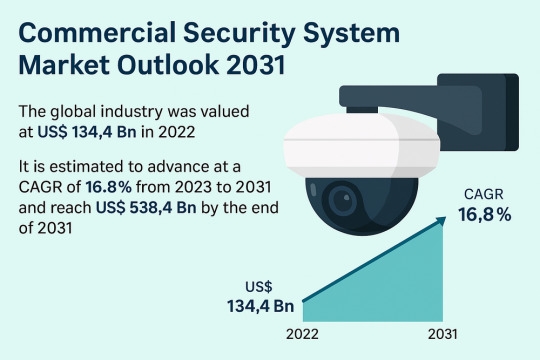
The global commercial security system market is set to experience a robust surge, rising from a valuation of USD 134.4 billion in 2022 to an impressive USD 538.4 billion by 2031, expanding at a CAGR of 16.8% during the forecast period from 2023 to 2031. This growth is driven by a rising need for sophisticated security infrastructure in response to increasing crime rates, technological advancements, and the ongoing global push toward smart cities and IoT integration.
Market Overview
Commercial security systems encompass a wide range of products and services designed to protect physical assets, personnel, and data across commercial premises. These include surveillance cameras, access control solutions, alarm systems, intrusion detection, and remote monitoring services. The rapid digitalization of businesses and the growing emphasis on regulatory compliance across sectors such as BFSI, government, defense, and transportation are fueling the demand for comprehensive, scalable security solutions.
The adoption of cloud-based platforms, smart analytics, and integrated Internet of Things (IoT) technologies is transforming the industry, enabling businesses to implement real-time, automated security protocols with remote monitoring capabilities.
Market Drivers & Trends
The increasing deployment of surveillance systems in smart cities and the integration of IoT in security systems are major drivers. IoT-based platforms offer cloud connectivity, enabling centralized monitoring and control, anomaly detection, and predictive analytics. The flexibility to manage systems remotely via mobile applications or web portals has become a game-changer for organizations with multiple facilities.
According to Nasscom, the IoT market in India alone reached US$ 9 billion in 2020, indicating the explosive potential for integration with commercial security solutions. The demand for AI-powered video analytics, smart sensors, and automated response systems is also growing, giving rise to sophisticated, layered defense mechanisms.
Furthermore, increasing incidents of theft, vandalism, and violent intrusions are pushing organizations—particularly in retail, government, and education sectors—to bolster their security infrastructure, driving continuous market expansion.
Key Players and Industry Leaders
The global commercial security system market is fragmented and highly competitive, with numerous global and regional players vying for market share through innovation, expansion, and strategic partnerships. Key players include:
Assa Abloy AB
Axis Communications AB
Bosch Sicherheitssysteme GmbH
Carrier Global Corporation
Dahua Technology Co., Ltd.
Hangzhou Hikvision Digital Technology Co., Ltd.
Honeywell International Inc.
Johnson Controls International
Nortek Security & Control LLC
Tyco International Ltd.
These companies are investing heavily in R&D and expanding their product portfolios to include cloud-enabled platforms, AI surveillance, and integrated access control systems.
Recent Developments
The industry has witnessed a wave of innovation and strategic moves aimed at consolidating leadership and expanding global footprints:
May 2023: Carrier Global Corporation launched i-Vu Pro v8.5 software, offering enhanced building automation with MQTT integration and secure operator reporting.
March 2023: Johnson Controls unveiled its IQ Pro Security Panel, designed for intrusion protection in large-scale commercial properties and campuses.
October 2021: Nice North America acquired Nortek Security & Control LLC, boosting its regional presence and strengthening its distribution network.
These developments reflect the industry's shift toward intelligent, scalable, and future-ready commercial security ecosystems.
Gain a preview of important insights from our Report in this sample - https://www.transparencymarketresearch.com/sample/sample.php?flag=S&rep_id=81695
Latest Market Trends
Some key trends reshaping the industry include:
AI-powered surveillance and predictive analytics: Cameras that can recognize suspicious behavior in real time.
Integration with building management systems: Security systems now function seamlessly alongside HVAC, lighting, and fire safety solutions.
Cloud-first architecture: Remote management, data sharing, and instant alerts are becoming essential for large enterprises.
Customization and modular solutions: Businesses are demanding tailor-made security infrastructures based on specific threat profiles and compliance needs.
Market Opportunities
Significant market opportunities lie in:
Smart city initiatives across developing countries, particularly in Asia Pacific and Latin America.
Expansion of retail and logistics infrastructure, where real-time theft deterrence is critical.
Government investments in public surveillance, particularly for traffic monitoring and urban safety.
Integration of biometric access systems in high-security industries such as defense and banking.
The rise of cloud-native security and analytics-as-a-service (AaaS) models also offers opportunities for SaaS providers to enter the market.
Future Outlook
The commercial security system market is expected to become increasingly data-driven and proactive, moving beyond surveillance to predictive threat management. By 2031, integrated platforms capable of unifying cybersecurity, physical security, and enterprise resource planning (ERP) will become standard in large enterprises.
Technological breakthroughs in edge AI, 5G, and blockchain-enabled identity verification will drive the next phase of market growth. As automation continues to evolve, the role of human intervention will shift from active monitoring to decision-making and incident response.
Market Segmentation
By Offering:
Hardware: Burglar alarms, fire & life safety devices, surveillance cameras, keycard access systems.
Software: AI-powered analytics, video management, IoT dashboards.
Services: Installation, maintenance, cloud hosting, consulting.
By Application:
Indoor/Outdoor Surveillance
Flood Detection/Protection
Theft Deterrence (dominant segment – 31.1% share in 2022)
Occupancy Monitoring
Queue Management & Crowd Control
By End-use Industry:
Government (28.1% share in 2022)
Military & Defense
Retail
BFSI
Sports & Leisure
Education & Hospitality
Regional Insights
Asia Pacific leads the global market, accounting for 33.1% share in 2022, driven by rapid urbanization, increased crime rates, and a surge in smart infrastructure projects in countries like China, India, and Southeast Asian nations.
North America (30.1% share in 2022) and Europe are also key markets, benefiting from robust investment in R&D, early adoption of smart technologies, and well-established security infrastructure. Latin America and the Middle East & Africa regions are emerging as high-potential markets due to rising demand for commercial surveillance and intrusion prevention systems in urban and high-risk areas.
Why Buy This Report?
This comprehensive market analysis report offers:
In-depth market forecasts to 2031, with accurate sizing in USD and volume metrics.
Extensive segmentation insights by offering, application, industry, and region.
Detailed competitive landscape analysis, including company profiles, financials, strategies, and recent developments.
Evaluation of key drivers, restraints, opportunities, and threats using frameworks such as Porter’s Five Forces and value chain analysis.
Cross-segment and regional quantitative and qualitative insights to support strategic decision-making.
The report provides invaluable insights for security system vendors, technology providers, government agencies, investors, and consultants seeking to understand the dynamics of the evolving global commercial security system market.
0 notes
Text
WordPress Statistics 2025: Market Share, Usage, and Trends
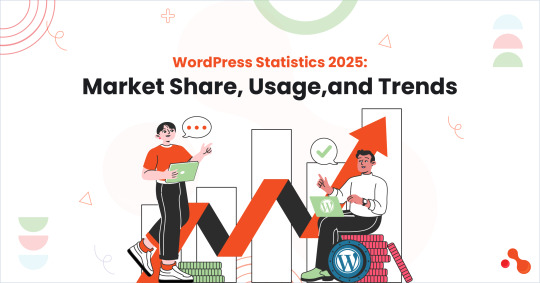
WordPress statistics 2025 show that the platform remains the most dominant content management system in the world. It powers a wide range of websites, including blogs, online stores, media outlets, and business platforms of every size.
For developers, agencies, and businesses, understanding WordPress market share 2025 and how usage patterns are shifting is essential. These insights help in making informed decisions about design practices, hosting environments, and future development work.
In this blog, we’ll cover the most recent WordPress statistics 2025, including global adoption rates, plugin and theme usage, and real trends across regions and industries.
WordPress in 2025: A Quick Snapshot
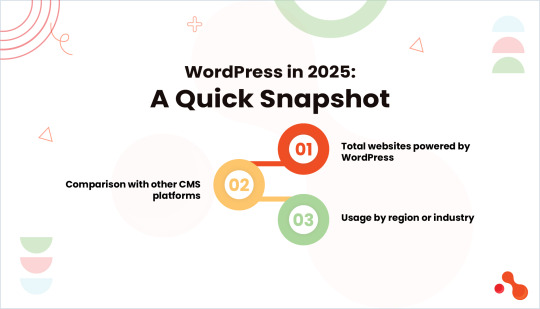
Total websites powered by WordPress
WordPress statistics 2025 report that 43.4 % to 43.6 % of all websites worldwide run on WordPress. Depending on which source you read, that equates to roughly 529–535 million websites using the platform.
Comparison with other CMS platforms
When focusing on websites that use a known content management system, WordPress holds an even stronger position. It captures 61–62.7 % of CMS-based sites, with its nearest competitors Shopify, Wix, and Squarespace, each holding between 3–7 %
Breaking it down:
Shopify: ~4.6–6.7 %
Wix: ~4–5.4 %
Squarespace: ~3–3.3 %
Joomla and Drupal: each around 1–2 %
Usage by region or industry
Although specific breakdowns by region or industry are not summarized in one dataset, we can infer some patterns from the global usage:
North America and Europe both break into high adoption, accounting for nearly half of all WordPress sites.
Emerging markets in Asia-Pacific, Latin America, and Africa all show strong uptake as mobile-first site development becomes a priority.
When it comes to industry, WordPress is the go-to platform for blogs, small businesses, media publishers, and growing eCommerce sites, especially those powered by WooCommerce.
WordPress Market Share in 2025

According to the latest WordPress statistics 2025, the platform holds a global CMS market share of approximately 62.7% among websites using a content management system. This figure has remained relatively stable compared to the past two years, indicating continued dominance and long-term trust in the WordPress ecosystem.
When looking at WordPress market share 2025 in context, the numbers reflect consistent leadership:
In 2021, WordPress held around 39% of all websites
In 2023, the share climbed to 42.9%
As of mid-2025, the figure is at 43.4% across all websites and over 62% in CMS-specific usage
This slow but steady climb highlights the platform’s strong position across both technical and non-technical user bases.
So, why does WordPress continue to lead?
The reasons are practical:
A vast ecosystem of plugins, themes, and tools
Easy access to freelancers and any WordPress website development company
Compatibility with modern technologies, including headless frameworks and third-party integrations
More importantly, updates in recent versions have focused on user experience, performance, and accessibility. These improvements have helped maintain WordPress’s popularity across industries, especially in sectors that rely heavily on scalable content, such as publishing, e-commerce, and education.
For those involved in WordPress website design and development, this ongoing dominance means the platform is still the safest and most strategic bet for client projects, personal brands, or even product sites in 2025.
Key Usage Statistics
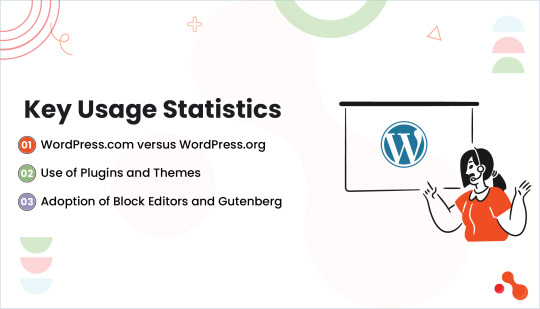
In 2025, the WordPress ecosystem will have grown significantly. According to current estimates, there are between 529 and 535 million active WordPress websites, which make up more than 43% of all websites on the internet. These figures show the platform's size as well as its continued significance in the development of the contemporary web.
WordPress.com versus WordPress.org
The majority of developers, agencies, and business owners still favor WordPress' self-hosted version, which is accessible via WordPress.org. It provides access to thousands of plugins and themes, complete control, and customization. However, WordPress.com, which offers a hosted version with fewer customization options and a simpler setup, continues to serve a sizable user base, particularly among smaller websites and personal bloggers.
WordPress.org powers about two-thirds of all WordPress websites, with WordPress.com powering the other third. The self-hosted option is preferred due to its adaptability, superior plugin support, and appropriateness for designing and developing business-grade WordPress websites.
Use of Plugins and Themes
With new entries being added every day, the WordPress plugin directory has surpassed 60,000 entries. Installs are still dominated by plugins like Yoast SEO, Elementor, WPForms, and WooCommerce. The top 20 plugins collectively have over 250 million active installations on WordPress websites.
More than 10,000 free themes are available on WordPress.org, and thousands more can be purchased directly from developers or through marketplaces like ThemeForest. Among the most popular themes in both general and business use cases are Astra, Hello, Kadence, and Blocksy.
This expansion shows how simple it is now for users and WordPress website development companies to create customized websites using functional plugins and reusable design blocks without having to start from scratch.
Adoption of Block Editors and Gutenberg
The WordPress experience now fully incorporates the Gutenberg block editor. Since its introduction in version 5.0, the block editor has advanced considerably, and by 2025, over 50% of active websites either use it alone or in conjunction with other site editing tools.
The majority of newly developed themes in the ecosystem support Gutenberg natively, and block-based themes have become more popular. Because of the block editor's improved performance, cleaner code output, and wider compatibility, many users who previously relied on third-party page builders have begun switching.
The block editor is becoming the new norm for WordPress website designers and developers, whether they are independent contractors or part of larger teams. With every release of the editor, new features and patterns are added, and this adoption keeps growing.
Plugin & Theme Ecosystem in 2025
The 2025 Plugin and Theme Ecosystem
One of WordPress's greatest advantages has always been its ecosystem of plugins and themes. By 2025, this section of the platform will have improved support for contemporary design workflows, stronger marketplaces, and more sophisticated tools.
Top Themes and Plugins
More than 60,000 active plugins, ranging from simple form builders to complete eCommerce suites, are currently available in the WordPress plugin repository. These days, some of the most popular plugins are:
For on-page SEO optimization, Yoast SEO remains the preferred option.
Over 40% of online stores are powered by WooCommerce.
People who want drag-and-drop functionality frequently use Elementor.
WPForms is a popular option for survey and contact forms.
Wordfence Security, Advanced Custom Fields, and Rank Math are still crucial tools.
Lightweight and adaptable themes top the theme charts. Particularly well-liked by agencies and independent contractors are Astra, Kadence, GeneratePress, and Blocksy. These themes are perfect for designing and developing contemporary WordPress websites because they provide deep integration with the block editor and are performance-optimized.
Growth in Marketplaces and Premium Tools
The popularity of premium tools is still growing for both themes and plugins. Both product listings and buyer demand have steadily increased on marketplaces such as ThemeForest, TemplateMonster, and CodeCanyon.
In 2025, buyers seek out tools that are well-supported, lightweight, and compatible with the block editor. Tools with low-code configuration options, prebuilt layouts, and setup wizards have a higher chance of success.
To expedite client work, many WordPress website development companies now build their private plugin libraries and block collections. As a result, there is now more emphasis on customized solutions and less dependence on generic themes.
Customization and User Experience Trends
The transition from traditional custom coding to modular site building is one of the most obvious trends. Block-based patterns, reusable design sections, and custom global styles are being used by developers and designers in place of writing PHP templates and functions for each project.
Building scalable, consistent websites without clogging the backend is made simpler with this method. It also enhances site visitors' front-end experience when combined with lighter plugins and faster themes!
Designers are setting priorities:
Unconventional accessibility
Clear spacing and typefaces
Uniformity of appearance across devices
Configurations for theme.json to make edits easier
Therefore, in 2025, the leading tools are those that facilitate easy customization without sacrificing performance. This represents a significant departure from previous methods and directly relates to the changing standards in the development and design of WordPress websites.
WordPress for Business: Uptake & Applications
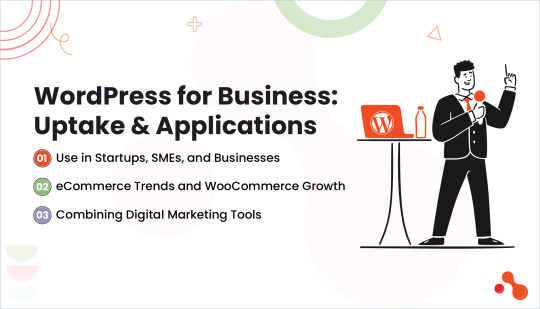
WordPress is still the best option for companies of all sizes in 2025. Because of its extensive plugin support, flexibility, and low setup costs, startups and SMEs are still using it. Bigger businesses are also spending money on customized builds, frequently utilizing them as a content layer for platforms with a lot of traffic or as a headless CMS.
Use in Startups, SMEs, and Businesses
For MVPs, content-driven websites, and quick deployment, startups favor WordPress. It is used by many small and medium-sized businesses for complete websites that have integrated CRM and marketing tools. Enterprise adoption is increasing in media, publishing, and education, where multilingual support and content workflows are critical.
A WordPress website development company frequently supports this growth by providing customized solutions that meet various business sizes and technical needs.
eCommerce Trends and WooCommerce Growth
More than 43% of all eCommerce websites worldwide are powered by WooCommerce. WordPress adoption is still increasing, particularly among regional brands, service providers, and small retailers, according to 2025 statistics. Faster checkout times, multi-vendor support, and mobile-first shopping are becoming more and more important.
Combining Digital Marketing Tools
Deeper integration with digital marketing platforms is now a part of WordPress website design and development. Popular plugins are directly integrated with tools like Google Analytics 4, HubSpot, and Mailchimp to facilitate A/B testing, lead generation, and tracking. These features give companies complete control over their websites while streamlining their marketing.
Community & Ecosystem Growth
More than 18,000 people are actively contributing to WordPress as of 2025, covering code, documentation, translation, accessibility, and support. Through Make WordPress teams, these people work together to enhance everything from editorial tools to performance. Contributions are made by teams, individuals, and freelancers working for all of the major WordPress website development companies worldwide.
Things Like Meetups and WordCamps
Local meetups and WordCamps are back in full force. In 2025, over 120 WordCamps are planned worldwide, with both hybrid and in-person formats becoming more and more popular. Onboarding new developers, educating agencies, and exhibiting advancements in WordPress website design and development are all made possible by community-led events. Local networking and candid conversations are still facilitated by smaller gatherings!
The Open-Source Culture's Effect
WordPress's greatest strength is still its open-source architecture. It promotes openness, information exchange, and quick iterations. WordPress allows users complete control over their code and content, in contrast to closed platforms. A thriving ecosystem of theme developers, plugin authors, and entrepreneurs who depend on a robust yet free foundation to construct their goods and services is supported by this structure.
Top Trends in WordPress Website Development
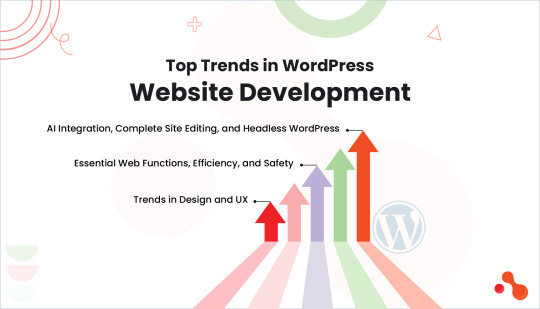
WordPress website development 2025 is influenced by performance, flexibility, and contemporary tools, like:
AI Integration, Complete Site Editing, and Headless WordPress
With the majority of themes supporting global styles and block-based design, full site editing is now a standard feature. AI tools are starting to appear in plugins to help with SEO, layout recommendations, and content. Adoption of headless WordPress is growing, particularly for enterprise and performance-focused projects that use Next.js and other frameworks.
Essential Web Functions, Efficiency, and Safety
Plugins and themes now automatically conform to Core Web Vitals standards. Common objectives include cleaner scripts, faster load times, and better mobile user experience. These days, security tools provide smooth updates, real-time monitoring, and automated hardening. These elements are essential to any contemporary WordPress website development company.
Trends in Design and UX
In 2025, design will prioritize clear visual hierarchy, mobile-first architecture, and simple layouts. Design coherence between blocks is maintained with the aid of tools such as theme.json. Global styling and reusable block patterns speed up the WordPress website design and development process.
Bottomline
With over 43% of the internet running on WordPress and over 62% of the market share among content-managed sites, the platform's continued dominance in the CMS space is confirmed by the WordPress statistics 2025. Its adaptability, extensive ecosystem of plugins and themes, and robust community support have all contributed to its continued success.
Areas like WooCommerce, Full Site Editing, and headless WordPress have all experienced steady growth. While emerging trends in AI, mobile optimization, and performance standards are influencing the next wave of WordPress website design and development, developers and businesses still rely on reliable tools.
In the future, WordPress is probably going to prioritize better support for multilingual and enterprise requirements, quicker editing experiences, and deeper integration with contemporary technologies. With a track record of growth and adaptability, the platform continues to be a viable option for users, agencies, and any WordPress website development company!
0 notes
Text
Stock Trading App Market Analysis and Forecast
According to Market Statistix, the Stock Trading App Market revenue and growth prospects are expected to grow at a significant rate during the analysis period of 2024-2032, with 2023 as the base year. Stock Trading App Market research is an ongoing process. Regularly monitor and evaluate market dynamics to stay informed and adapt your strategies accordingly. As a market research and consulting firm, we offer market research reports that focus on major parameters, including Target Market Identification, Customer Needs and Preferences, Thorough Competitor Analysis, Market Size and market Analysis, and other major factors. In the end, we provide meaningful insights and actionable recommendations that inform decision-making and strategy development.
The Stock Trading App Market is projected to experience steady growth, expanding at a CAGR of 21.1% over the forecast period.
Who are the key players operating in the industry?
Webull (United States), Interactive Brokers (United States), Robinhood (United States), Trade Republic, Revolut, Freetrade, CoinDCX, Zerodha (India), TradeStation Select (United States), Upstock (India), Firstrade (United States), J.P. Morgan (United States), TD Ameritrade (United States), Angel Broking (India).
Request a sample on this latest research report Stock Trading App Market spread across 100+ pages and supported with tables and figures is now available @ https://www.marketstatistix.com/sample-report/global-stock-trading-app-market
Stock Trading App Market Overview and Insights:
Market Statistix is solidifying its reputation as a leading market research and consulting service provider, delivering data-driven insights that help businesses make informed strategic decisions. By focusing on detailed demand analysis, accurate market forecasts, and competitive evaluations, we equip companies with the essential tools to succeed in an increasingly competitive landscape. This comprehensive Stock Trading App market analysis offers a detailed overview of the current environment and forecasts growth trends through 2032. Our expertise enables clients to stay ahead of the curve, providing actionable insights and competitive intelligence tailored to their industries.
What is included in Stock Trading App market segmentation?
The report has segmented the market into the following categories:
Segment by Type: Desktop app, Web, Mobile app
Segment by Application: Intraday trading, Delivery trading, Swing trading, Others
Stock Trading App market is segmented by company, region (country), by Type, and by Application. Players, stakeholders, and other participants in the Stock Trading App market will be able to gain the upper hand as they use the report as a powerful resource. The segmental analysis focuses on revenue and forecast by Type and by Application in terms of revenue and forecast for the period 2019-2032.
Have a query? Market an enquiry before purchase @ https://www.marketstatistix.com/enquiry-before-buy/global-stock-trading-app-market
Competitive Analysis of the market in the report identifies various key manufacturers of the market. We do company profiling for major key players. The research report includes Competitive Positioning, Investment Analysis, BCG Matrix, Heat Map Analysis, and Mergers & Acquisitions. It helps the reader understand the strategies and collaborations that players are targeting to combat competition in the market. The comprehensive report offers a significant microscopic look at the market. The reader can identify the footprints of the manufacturers by knowing about the product portfolio, the global price of manufacturers, and production by producers during the forecast period.
As market research and consulting firm we offer market research report which is focusing on major parameters including Target Market Identification, Customer Needs and Preferences, Thorough Competitor Analysis, Market Size & Market Analysis, and other major factors.
Purchase the latest edition of the Stock Trading App market report now @ https://www.marketstatistix.com/buy-now?format=1&report=69
The Stock Trading App market research study ensures the highest level of accuracy and reliability as we precisely examine the overall industry, covering all the market fundamentals. By leveraging a wide range of primary and secondary sources, we establish a strong foundation for our findings. Industry-standard tools like Porter's Five Forces Analysis, SWOT Analysis, and Price Trend Analysis further enhance the comprehensiveness of our evaluation.
A Comprehensive analysis of consumption, revenue, market share, and growth rate is provided for the following regions:
-The Middle East and Africa region, including countries such as South Africa, Saudi Arabia, UAE, Israel, Egypt, and others.
-North America, comprising the United States, Mexico, and Canada.
-South America, including countries such as Brazil, Venezuela, Argentina, Ecuador, Peru, Colombia, and others.
-Europe (including Turkey, Spain, the Netherlands, Denmark, Belgium, Switzerland, Germany, Russia, the UK, Italy, France, and others)
-The Asia-Pacific region includes Taiwan, Hong Kong, Singapore, Vietnam, China, Malaysia, Japan, the Philippines, South Korea, Thailand, India, Indonesia, and Australia.
Browse Executive Summary and Complete Table of Content @ https://www.marketstatistix.com/report/global-stock-trading-app-market
Table of Contents for the Stock Trading App Market includes the following points:
Chapter 01 - Stock Trading App Executive Summary
Chapter 02 - Market Overview
Chapter 03 - Key Success Factors
Chapter 04 - Stock Trading App Market – Pricing Analysis Overview
Chapter 05 - Overview of the History of the Stock Trading App Market
Chapter 06 - Stock Trading App Market Segmentation [e.g. Type (Desktop app, Web, Mobile app), Application (Intraday trading, Delivery trading, Swing trading, Others)]
Chapter 07 - Analysis of Key and Emerging Countries in the Stock Trading App
Chapter 08 - Stock Trading App Market Structure and Value Analysis
Chapter 09 - Competitive Landscape and Key Challenges in the Stock Trading App Market
Chapter 10 - Assumptions and Abbreviations
Chapter 11 - Market Research Approach for Stock Trading App
About Market Statistix:
Market Statistix is an expert in the area of global market research consulting. With the aid of our ingenious database built by experts, we offer our clients a broad range of tailored Marketing and Business Research Solutions to choose from. We assist our clients in gaining a better understanding of the strengths and weaknesses of various markets, as well as how to capitalize on opportunities. Covering a wide variety of market applications, We are your one-stop solution for anything from data collection to investment advice, covering a wide variety of market scopes from digital goods to the food industry.
Contact Information:
Market Statistix
Media & Marketing Manager
Call: +91 9067 785 685
Email: [email protected] Website: www.marketstatistix.com
#StockTradingApp#MobileTrading#OnlineInvesting#TradingPlatform#InvestmentApps#StockMarketTools#FinanceApps#RetailInvesting#DigitalTrading#TradingTech
0 notes